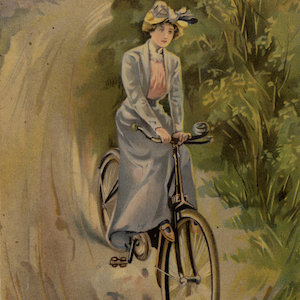Popular Culture
Stanislaus Maillard Describes the Women’s March
Stanislas Maillard, a National Guardsman and "veteran" of the taking of the Bastille, here testifies at a police court, on the events of 5–6 October. Notice that he ultimately supports the activism of the market women.
October Days: The Warning from the People
In response to the news that royal soldiers had desecrated a symbol of national rejuvenation, the revolutionary cockade, Marat published in his newspaper, The Friend of the People, the following letter calling for all patriotic citizens to take up arms since the royal soldiers had shown themselve

Canadian Women's History
There is also a great deal of material on the foundation of female education and on the women’s suffrage movement.Imperialism in North Africa: Song, Amina Annabi
North African women have long, rich traditions of vocal and instrumental music. At weddings and other joyous occasions, including religious celebrations, female musicians sing, perform, and dance.

Emory Women Writers Resource Project
The subjects covered are diverse and include commentaries on such topics as nature, native-white relations, emancipation, imperialism, social and sexual mores, wet nursing, Christianity, and women’s suffrage.
Louisa's World
[Instructors] might invite students to reconstruct Collins’s expectations and attitudes towards various topics, tracing perspectives that she noted as exceptional.
New York Public Library Digital Collections
The NYPL Digital Collection provides access to over 755,000 images digitized from primary sources and printed rarities, including illuminated manuscripts, vintage posters, illustrated books, and printed ephemera.Victims on Display
Meaningless violence was precisely how the Duchess of Gontaut viewed the events of July 14th, especially the murder of the military governor of the Bastille and of the mayor of Paris, whose heads were placed on pikes and paraded around the city.
A Defender of the Bastille Explains His Role
The soldiers stationed at the fortress did not see themselves as resisting the Revolution so much as keeping watch on a rather insignificant outpost that had nothing at all to do with the major events transpiring in Versailles.
A Conqueror of the Bastille Speaks
Having assembled at the traditional protest place in front of the City Hall, known as place des grèves (meaning sandbar, which it was, but which has come to mean "strike"), the crowd set off in search of ammunition.